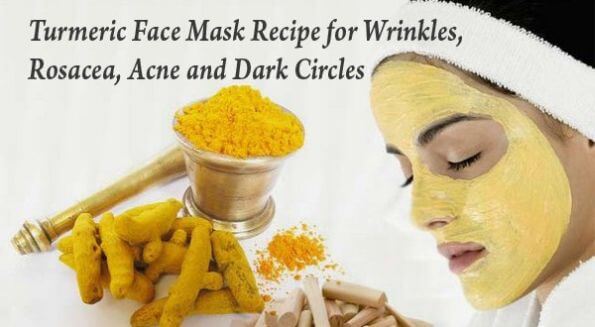
According to the Oxygen Radical Absorbance Capacity (ORAC) score, turmeric is the fourth most antioxidant-rich herb out of 159,277. Its extract, the Curcumin, has the ability to prevent and cure several different ailments due to its ability to penetrate cells and thus to fight free radical damage at the deepest levels.
Turmeric has unbelievable antimicrobial, astringent, antioxidant, moisturizing and anti-aging properties and in combination with other ingredients it can have long-term effects in reducing face wrinkles. Moreover, it can help people with oily skin by regulating the function of the sebaceous glands. Overall, the turmeric can nourish and rejuvenate the skin and can give it a fair complexion.
The Turmeric Face Mask Recipe
Ingredients
• 1 teaspoon turmeric powder
• 1 teaspoon organic yogurt
• 1 teaspoon raw honey
Preparation
Mix the turmeric powder in the yogurt and then add the honey. The mixture is then applied to the face and left there from 20 to 30 minutes. After that just rinse the mask off with lukewarm water. For full effect use this mask 3-4 times a week.
Original source Daily Nutrition News
SF Source Rise Earth May 1 2015
Turmeric – Its Origins
Turmeric (Curcuma longa) /ˈtɜrmərɪk/ or /ˈtjuːmərɪk/ or /ˈtuːmərɪk/[2] is a rhizomatous herbaceous perennial plant of the ginger family, Zingiberaceae.[3] It is native in southwest India, and needs temperatures between 20 and 30 °C (68 and 86 °F) and a considerable amount of annual rainfall to thrive.[4] Plants are gathered annually for their rhizomes, and propagated from some of those rhizomes in the following season.
When not used fresh, the rhizomes are boiled for about 30–45 minutes and then dried in hot ovens,[5] after which they are ground into a deep-orange-yellow powder commonly used as a spice in Indian cuisine and curries, for dyeing, and to impart color to mustard condiments. One active ingredient is curcumin, which has a distinctly earthy, slightly bitter, slightly hot peppery flavor and a mustardy smell.
Folk medicine and traditional uses
In India, turmeric has been used traditionally for thousands of years as a remedy for stomach and liver ailments, as well as topically to heal sores, basically for its supposed antimicrobial property.[15] In the Siddha system (since around 1900 BCE) turmeric was a medicine for a range of diseases and conditions, including those of the skin, pulmonary, and gastrointestinal systems, aches, pains, wounds, sprains, and liver disorders. A fresh juice is commonly used in many skin conditions, including eczema, chicken pox, shingles, allergy, and scabies.[16]
The active compound curcumin is believed to have a wide range of biological effects including anti-inflammatory, antioxidant, antitumour, antibacterial, and antiviral activities, which indicate potential in clinical medicine.[17]
